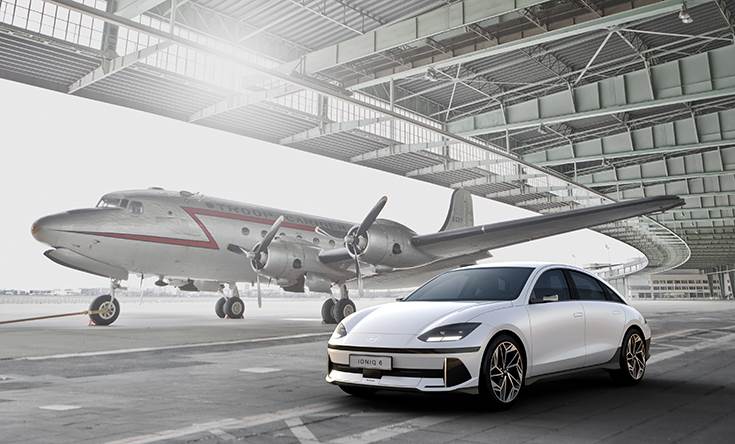2022/06/29 YOKOHAMA, Japan – Nissan Motor Co., Ltd. today announced production, sales and export figures for May 2022. 1. Production Nissan’s global production in May increased 1.7% from a year earlier. Production in Japan increased 77.9% from a year earlier. Production outside Japan declined 3.7% from a year earlier. 2. Sales Global sales in May… Continue reading @Nissan: 2022/06/29 Nissan production, sales and exports for May 2022 Nissan Motor Co., Ltd….000783
Tag: Mobility
Volkswagen and Siemens invest $450m in Electrify America’s growth vision
Volkswagen together with Siemens, the leading global technology company, is investing $450 million (Rs 3,513 crore), valuing Electrify America at $2.45 billion (Rs 19,129 crore). Through its financing arm Siemens Financial Services (SFS), Siemens becomes a minority shareholder in Electrify America with a low triple-digit million USD investment and will hold a seat on the… Continue reading Volkswagen and Siemens invest $450m in Electrify America’s growth vision
Hyundai reveals Ioniq 6 EV ahead of world premiere in July
Hyundai Motor Company today revealed the streamlined design of the Ioniq 6, the second model in its Ioniq dedicated all-electric-vehicle line-up brand. The Ioniq 6, which Hyundai describes as an ‘Electrified Streamliner’, is high on the aerodynamics quotient and makes innovative use of sustainable materials to reflect today’s EV customers’ values. The latest and most… Continue reading Hyundai reveals Ioniq 6 EV ahead of world premiere in July
Cleantechnica: Tesla Building Standard Range And Long Range Model Y In Austin 002083
Drive Tesla Canada reports that Tesla may be operating two Model Y production lines at its gigafactory in Austin — one for the dual-motor Long Range version that has also been the base version of the Model Y until now and one for a new dual-motor Standard Range 279 mile version. Several of its readers… Continue reading Cleantechnica: Tesla Building Standard Range And Long Range Model Y In Austin 002083
Clean Technica: Tesla’s Autopilot Team & Cybertruck Visit New Orleans For CVPR002081
Tesla’s Autopilot team recently visited New Orleans for the Conference on Computer Vision and Pattern Recognition (CVPR). Ashok Elluswamy, Tesla’s Director of Autopilot Software, shared a photo of Tesla’s boot with an invitation for those in the area to stop by, talk with the engineers, and see the Cybertruck. The Tesla Autopilot team is at… Continue reading Clean Technica: Tesla’s Autopilot Team & Cybertruck Visit New Orleans For CVPR002081
Indian EV startups find favour with investors, see sharp spike in investments
Indian startups operating in the light electric mobility space have bucked the overall fundraising slowdown trend as risk capital investors place their bets on the growth prospects of the nascent but fast-growing sector. The segment, which covers electric two- and three-wheeler makers, battery manufacturers and EV charging startups, has already racked up about $482 million… Continue reading Indian EV startups find favour with investors, see sharp spike in investments
Tesla lays off nearly 200 Autopilot workers, shutters San Mateo office
Tesla has gutted the data annotation team working on Autopilot, laying off nearly 200 employees and shutting down the San Mateo, California office where they worked. The layoffs, first reported by Bloomberg, have been confirmed by sources who talked to TechCrunch on condition of anonymity. The cuts come amid a broader reduction of jobs at… Continue reading Tesla lays off nearly 200 Autopilot workers, shutters San Mateo office
WOVEN PLANET HOLDINGS APPOINTS JOHN ABSMEIER TO BE CHIEF TECHNOLOGY OFFICER
Joins deep leadership bench leading accelerating software and technology development program TOKYO and PALO ALTO, Calif., June 28, 2022 /PRNewswire/ — Woven Planet Holdings, Inc. (“Woven Planet”), a subsidiary of Toyota Motor Corporation (“Toyota”), today announced that John Absmeier will join the Company as chief technology officer, effective July 25, 2022. He will report to Woven Planet… Continue reading WOVEN PLANET HOLDINGS APPOINTS JOHN ABSMEIER TO BE CHIEF TECHNOLOGY OFFICER
Tesla’s Aura Dims as Its Plunging Stock Highlights the Risks It Faces
Investors are reassessing the premise that justified Tesla’s astronomical stock price and made its founder, Elon Musk, the richest person in the world. Tesla’s $1 trillion valuation made sense only if investors believed the electric car company was on a path to dominate the auto industry the way Apple rules smartphones or Amazon commands online… Continue reading Tesla’s Aura Dims as Its Plunging Stock Highlights the Risks It Faces
BMW taps Valeo for driving assistance systems in its next-gen EVs
BMW Group has tapped Valeo to provide the advanced driver assistance system for the automaker’s new electric vehicle platform due to launch in 2025. The deal, a significant win for Valeo, also holds importance for BMW. The automaker is aiming to capture a 50% market share of global EV sales by the end of the… Continue reading BMW taps Valeo for driving assistance systems in its next-gen EVs
